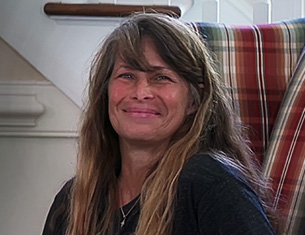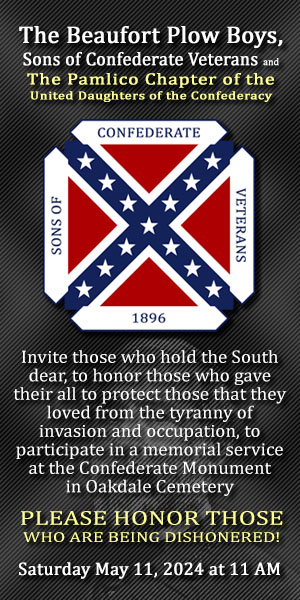The Human Touch Revealing All that is Real
Earl Scruggs (1924 - 2012)
Publisher's note: We believe the subject of history makes people (i.e., American people) smarter, so in our quest to educate others, we will provide excerpts from the North Carolina History Project, an online publication of the John Locke Foundation. This one hundred and fifth installment, by Jonathan Martin, was originally posted in the North Carolina History Project.
John Hartford, a bluegrass legend in his own right, once commented on the banjo by announcing, "Here's the way I feel about it. Everybody's all worried about who invented the style and it's obvious that three-finger banjo pickers have been around a long time - maybe since 1840. But my feeling about it is that if it wasn't for Earl Scruggs, you wouldn't worried about who invented it." Hartford, along with numerous other musicians and historians, believed that Earl Scruggs was the true reason behind bluegrass music and the banjo's popularity and resonance.
Earl Scruggs, born in Shelby, North Carolina, on January 6, 1924, grew up in a family that devoted much of its time to music and playing instruments. After the death of his father, the four year old Scruggs started picking the banjo. Even though he was just a young child, Earl followed his older brothers who spent their time off from farm work playing the banjo, the guitar, autoharp, and fiddle. Earl's earliest influences were Maybelle Carter, his brother Junie Scruggs, and local banjo player Smith Hammett. Hammett, who employed a three-finger banjo playing technique, was the prime motivation behind Earl's passion to play the banjo. All the skills and techniques that Earl mastered were all self-taught. The young musician's first banjo was a ten dollar banjo that he bought from Montgomery-Ward mail order company.
In 1945, Earl joined a Nashville outfit, and he was later asked to replace an unfilled spot on Bill Monroe and Lester Flatt's Blue Grass Boys band. The band, with Monroe on the mandolin, Scruggs on banjo, Flatt playing guitar, and two other musicians playing the fiddle and bass, became popular in Nashville. They soon became regulars on the Grand Ole Opry. The Blue Grass Boys toured the towns across Tennessee and the Carolinas, and Scruggs later recalled, "We played in rain, we played in snow, we played where the power would [be] off and we would have to play by lantern light with no sound." The band's travels brought the band together, and as Scruggs said, "It seemed to make Bill stronger and it brought out the deep feeling and love he had for what he was doing." In 1946, the Blue Grass Boys started to record their songs, increasing their popularity. However, Earl left the band in 1948 to form his own band and to take care of his mother in North Carolina.
Scruggs new band, the Foggy Mountain Boys started touring and recording in 1948, and the trio (Scruggs, Lester Flatt, and Cedric Rainwater) earned a reputation as one of the best string bands in the South during the 1950s and 1960s. Scruggs proclaimed, "We had a good outfit. It wasn't long until we got a chance at some network stuff" and the "network stuff" resulted in many records and famous tours throughout the Carolinas. Earl married Louise Certain in the late 1940s, and Louise helped manage and direct the band to fame. The band's first recording gig was with Mercury Records, and the first songs the Foggy Mountain Boys recorded were "My Cabin in Caroline," "We'll Meet Again Sweetheart," and "God Loves His Children." Later, the band recorded with Columbia Records and some of Scruggs's most famous compositions - "Flint Hill Special," "Foggy Mountain Breakdown," and "Earl's Breakdown" - became the hallmark songs for the Foggy Mountain Boys.
In 1969, after nearly two decades of recording with the Foggy Mountain Boys, Earl decided to form his own band with his sons, Gary and Randy Scruggs. Employing more electronic instruments, The Earl Scruggs Revue classified itself as a folk-rock band, and the new band became yet another popular outfit with Earl at the helm. In 1980 Scruggs retired after a lifetime of performing mountain music. In 1985, both Scruggs and his early band mate, Lester Flatt, were inducted into the Country Music Hall of Fame. After his appearance at the Country Music Hall of Fame Induction Ceremony, Scruggs commented on his acceptance speech: "I didn't have a speech prepared that night. I didn't have one prepared and I just went up and smiled and bowed and walked off. From the way I'm rattlin' off now it doesn't sound like it, but put me out on a stage to make a speech [and] I just go speechless." After his retirement, "The Father of Bluegrass Music," and his bride moved to Madison, Tennessee, where they often perform live shows.
Scruggs developed the renowned "Scruggs-Style Picking" when he was just ten years old, and when he was fifteen he started performing in local shows and radio programs. His three finger picking method involved using the thumb, index, and middle finger on the right hand, and it became the standard for banjo playing. All of the Scruggs brothers competed over who could play the banjo the best, and one day as the they were all playing together, Earl improvised with his three finger method. Eventually he mastered the style and his timing and tone influenced the bluegrass genre for years to come. Scruggs banjo style reawakened the bluegrass instrument and other musicians soon picked up the "Scruggs-Style Picking" method.
Many musicians and historians posit Earl Scruggs as the greatest banjo player of all time. Once establishing the famous bluegrass band known as the Foggy Mountain Boys, Scruggs later formed another troupe with his sons, the Earl Scruggs Revue. Both ventures, the Foggy Mountain Boys and the Earl Scruggs Revue, made lasting contributions to the bluegrass genre, with much recognition due to Scruggs masterful banjo techniques and playing methods. In 1985, the Country Music Association accepted Earl Scruggs into the organization's hall of fame.
Sources:
"Earl Scruggs." Britannica Biographies, Encyclopedia Britannica (Oct 2011).
"Earl Scruggs." Barry R. Willis. The Flatt and Scruggs Preservation Society (1998). http://www.flatt-and-scruggs.com/earlbio.html, (accessed November 1, 2011).
"Ear Scruggs Biography." David Vinopal. CMT Website, MTV Networks (2011). http://www.cmt.com/artists/az/scruggs_earl/bio.jhtml, (accessed November 1, 2011).
"Earl Scruggs Biography - Chapter 1." The Earl Scruggs Official Websit (2001). http://www.earlscruggs.com/biography.html, (accessed November 1, 2011).
Go Back
John Hartford, a bluegrass legend in his own right, once commented on the banjo by announcing, "Here's the way I feel about it. Everybody's all worried about who invented the style and it's obvious that three-finger banjo pickers have been around a long time - maybe since 1840. But my feeling about it is that if it wasn't for Earl Scruggs, you wouldn't worried about who invented it." Hartford, along with numerous other musicians and historians, believed that Earl Scruggs was the true reason behind bluegrass music and the banjo's popularity and resonance.
Earl Scruggs, born in Shelby, North Carolina, on January 6, 1924, grew up in a family that devoted much of its time to music and playing instruments. After the death of his father, the four year old Scruggs started picking the banjo. Even though he was just a young child, Earl followed his older brothers who spent their time off from farm work playing the banjo, the guitar, autoharp, and fiddle. Earl's earliest influences were Maybelle Carter, his brother Junie Scruggs, and local banjo player Smith Hammett. Hammett, who employed a three-finger banjo playing technique, was the prime motivation behind Earl's passion to play the banjo. All the skills and techniques that Earl mastered were all self-taught. The young musician's first banjo was a ten dollar banjo that he bought from Montgomery-Ward mail order company.
In 1945, Earl joined a Nashville outfit, and he was later asked to replace an unfilled spot on Bill Monroe and Lester Flatt's Blue Grass Boys band. The band, with Monroe on the mandolin, Scruggs on banjo, Flatt playing guitar, and two other musicians playing the fiddle and bass, became popular in Nashville. They soon became regulars on the Grand Ole Opry. The Blue Grass Boys toured the towns across Tennessee and the Carolinas, and Scruggs later recalled, "We played in rain, we played in snow, we played where the power would [be] off and we would have to play by lantern light with no sound." The band's travels brought the band together, and as Scruggs said, "It seemed to make Bill stronger and it brought out the deep feeling and love he had for what he was doing." In 1946, the Blue Grass Boys started to record their songs, increasing their popularity. However, Earl left the band in 1948 to form his own band and to take care of his mother in North Carolina.
Scruggs new band, the Foggy Mountain Boys started touring and recording in 1948, and the trio (Scruggs, Lester Flatt, and Cedric Rainwater) earned a reputation as one of the best string bands in the South during the 1950s and 1960s. Scruggs proclaimed, "We had a good outfit. It wasn't long until we got a chance at some network stuff" and the "network stuff" resulted in many records and famous tours throughout the Carolinas. Earl married Louise Certain in the late 1940s, and Louise helped manage and direct the band to fame. The band's first recording gig was with Mercury Records, and the first songs the Foggy Mountain Boys recorded were "My Cabin in Caroline," "We'll Meet Again Sweetheart," and "God Loves His Children." Later, the band recorded with Columbia Records and some of Scruggs's most famous compositions - "Flint Hill Special," "Foggy Mountain Breakdown," and "Earl's Breakdown" - became the hallmark songs for the Foggy Mountain Boys.
In 1969, after nearly two decades of recording with the Foggy Mountain Boys, Earl decided to form his own band with his sons, Gary and Randy Scruggs. Employing more electronic instruments, The Earl Scruggs Revue classified itself as a folk-rock band, and the new band became yet another popular outfit with Earl at the helm. In 1980 Scruggs retired after a lifetime of performing mountain music. In 1985, both Scruggs and his early band mate, Lester Flatt, were inducted into the Country Music Hall of Fame. After his appearance at the Country Music Hall of Fame Induction Ceremony, Scruggs commented on his acceptance speech: "I didn't have a speech prepared that night. I didn't have one prepared and I just went up and smiled and bowed and walked off. From the way I'm rattlin' off now it doesn't sound like it, but put me out on a stage to make a speech [and] I just go speechless." After his retirement, "The Father of Bluegrass Music," and his bride moved to Madison, Tennessee, where they often perform live shows.
Scruggs developed the renowned "Scruggs-Style Picking" when he was just ten years old, and when he was fifteen he started performing in local shows and radio programs. His three finger picking method involved using the thumb, index, and middle finger on the right hand, and it became the standard for banjo playing. All of the Scruggs brothers competed over who could play the banjo the best, and one day as the they were all playing together, Earl improvised with his three finger method. Eventually he mastered the style and his timing and tone influenced the bluegrass genre for years to come. Scruggs banjo style reawakened the bluegrass instrument and other musicians soon picked up the "Scruggs-Style Picking" method.
Many musicians and historians posit Earl Scruggs as the greatest banjo player of all time. Once establishing the famous bluegrass band known as the Foggy Mountain Boys, Scruggs later formed another troupe with his sons, the Earl Scruggs Revue. Both ventures, the Foggy Mountain Boys and the Earl Scruggs Revue, made lasting contributions to the bluegrass genre, with much recognition due to Scruggs masterful banjo techniques and playing methods. In 1985, the Country Music Association accepted Earl Scruggs into the organization's hall of fame.
Sources:
"Earl Scruggs." Britannica Biographies, Encyclopedia Britannica (Oct 2011).
"Earl Scruggs." Barry R. Willis. The Flatt and Scruggs Preservation Society (1998). http://www.flatt-and-scruggs.com/earlbio.html, (accessed November 1, 2011).
"Ear Scruggs Biography." David Vinopal. CMT Website, MTV Networks (2011). http://www.cmt.com/artists/az/scruggs_earl/bio.jhtml, (accessed November 1, 2011).
"Earl Scruggs Biography - Chapter 1." The Earl Scruggs Official Websit (2001). http://www.earlscruggs.com/biography.html, (accessed November 1, 2011).
| Vidant Health chooses location, moves forward with plans for multispecialty clinic in Belhaven | NC Past, In the Past, Body & Soul | Sacred Heart Cathedral |
Latest Body & Soul
|
The campaign for former President Donald Trump released a statement Saturday afternoon condemning the White House’s declaration of Easter Sunday as “Transgender Day of Visibility.”
Published: Thursday, April 4th, 2024 @ 1:31 pm
By: Daily Wire
|
|
He is risen!
Published: Saturday, March 30th, 2024 @ 8:06 pm
By: Stan Deatherage
|
|
The great misnomer for non Christians that the day Jesus Christ was executed by occupying Romans, celebrated by Christians as "Good" Friday, must be a paradox of ominous proportions.
Published: Saturday, March 30th, 2024 @ 7:52 pm
By: Stan Deatherage
|
|
The North Carolina Department of Health and Human Services is launching a Community Partner Engagement Plan to ensure the voices of North Carolina communities and families continue to be at the center of the department’s work.
Published: Tuesday, March 26th, 2024 @ 2:43 pm
By: Eastern NC NOW Staff
|
|
The North Carolina Department of Health and Human Services will host a live Spanish-language Cafecito and tele-town hall on Tuesday, Feb. 27, from 6 to 7 p.m., to discuss how to support and improve heart health as well as prevent and manage heart disease.
Published: Saturday, March 23rd, 2024 @ 8:56 pm
By: Eastern NC NOW Staff
|
|
Part of ongoing effort to raise awareness and combat rising congenital syphilis cases
Published: Saturday, March 23rd, 2024 @ 6:18 pm
By: Eastern NC NOW Staff
|
|
Recognition affirms ECU Health’s commitment to providing highly-reliable, human-centered care
Published: Wednesday, March 20th, 2024 @ 10:47 pm
By: Eastern NC NOW Staff
|
|
The North Carolina Department of Health and Human Services is launching a new Statewide Peer Warmline on Feb. 20, 2024. The new Peer Warmline will work in tandem with the North Carolina 988 Suicide and Crisis Lifeline by giving callers the option to speak with a Peer Support Specialist.
Published: Wednesday, March 20th, 2024 @ 1:29 am
By: Eastern NC NOW Staff
|
|
A subsidiary of one of the largest health insurance agencies in the U.S. was hit by a cyberattack earlier this week from what it believes is a foreign “nation-state” actor, crippling many pharmacies’ ability to process prescriptions across the country.
Published: Tuesday, March 5th, 2024 @ 1:12 am
By: Daily Wire
|






















